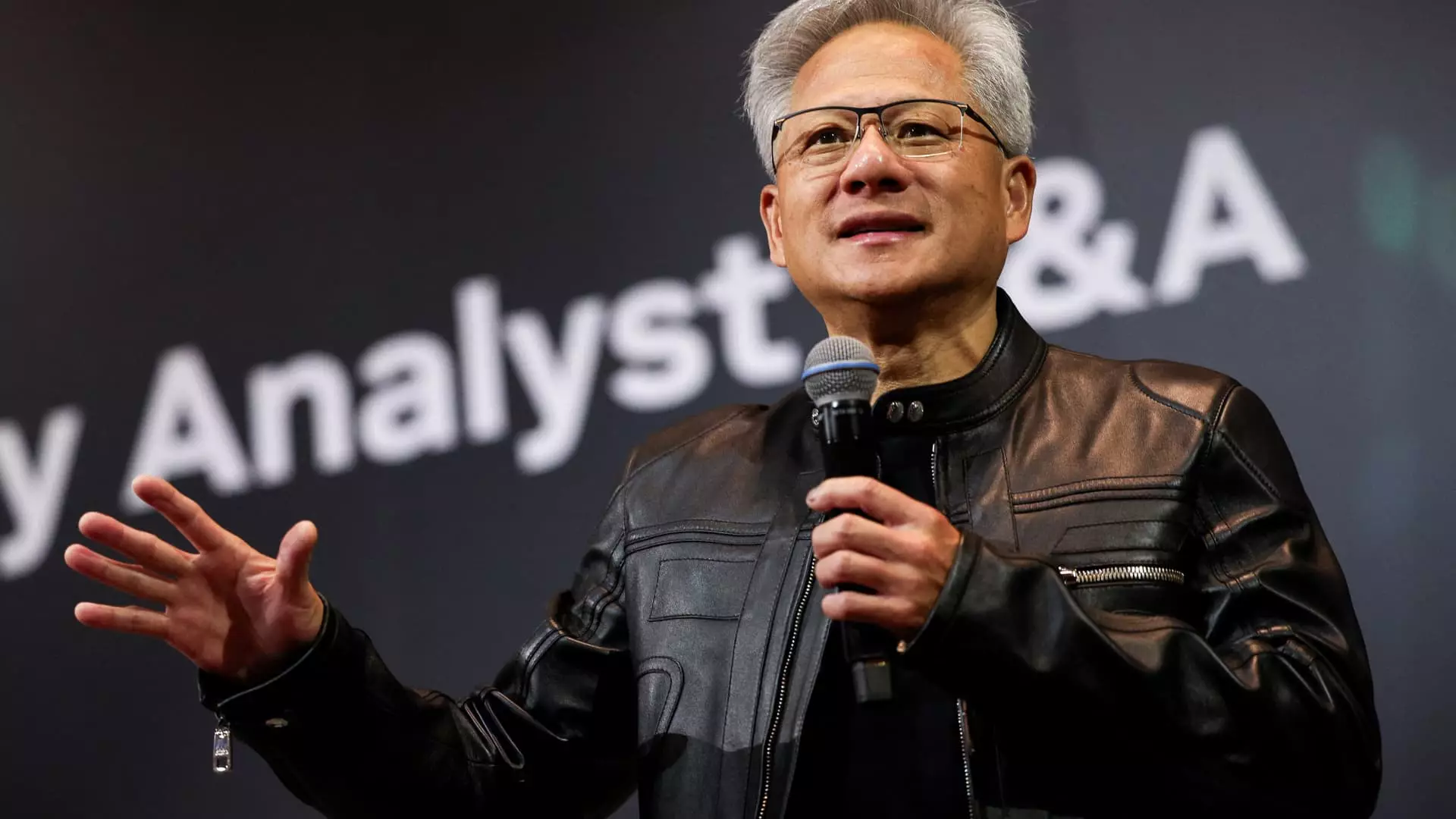In a landscape marked by geopolitical tension and technological ambition, Nvidia’s CEO Jensen Huang stepped into the spotlight not just as an industry innovator but as a diplomatic advocate for one of the world’s most critical tech players: Taiwan Semiconductor Manufacturing Company (TSMC). His public endorsement of TSMC as “one of the greatest companies in human history” is more than mere praise; it’s a declaration that underscores the shifting power dynamics within the semiconductor ecosystem. Huang’s comments, made during a visit to Taiwan, carry weight far beyond personal admiration, signaling a recognition of TSMC’s unparalleled influence in the global chip supply chain.
This stance is bold, especially given the current political climate dominated by U.S.-China competition and the Biden administration’s strategic push to cultivate domestic chip manufacturing through legislation like the CHIPS Act. While the U.S. seeks to strengthen its semiconductor sovereignty by investing billions in domestic fabs, industry leaders like Huang emphasize the importance of TSMC’s existing global leadership and innovation capacity. His assertion that “anyone who wants to buy TSMC stock is very smart” reflects a confidence not only in TSMC’s technological prowess but also in its strategic importance to the future of high-tech innovation worldwide.
The Strategic Ally and Economic Powerhouse
TSMC’s technological advancements and expansion plans reveal a company that has seamlessly integrated into the global supply chain, especially for cutting-edge AI and high-performance computing chips. With recent commitments to construct new fabrication plants in Arizona and an investment portfolio ballooning to $165 billion in U.S. facilities, TSMC embodies the convergence of technological mastery and geopolitical strategy. This expansion aligns with Washington’s vision of creating a resilient and secure chip industry, though TSMC’s own ambitions and existing innovations position it as a pivotal player, not merely a participant.
In this context, Huang’s comments elevate TSMC from being just a supplier to a symbol of technological excellence and strategic significance. His praise can be seen as a subtle encouragement for investors and government policymakers alike, hinting that TSMC’s leadership in the industry makes it not just a profitable investment but a critical national asset. The U.S., in its efforts to dominate future chip innovations, must now grapple with the reality that a Taiwanese company, rooted in a geopolitical hotspot, remains an indispensable pillar of the global tech infrastructure.
Implications for Geopolitical Strategy and Global Supply Chains
The open endorsement by Nvidia’s CEO also throws into sharp relief the complex balancing act of international tech alliances. On one side, TSMC’s technological excellence and strategic partnerships with global giants like Nvidia position it as a linchpin in the next-gen AI and digital infrastructure. On the other, the geopolitical stakes are high, with China raising security concerns over specific Nvidia chips intended for the Chinese market, leading to adjustments in supply chains and export controls. Nvidia, primarily through its H20 chips, exemplifies the delicate dance of innovation, national security, and international diplomacy.
The U.S. government’s exploration of stakes in key tech companies further complicates this mosaic. While official reports suggest little interest in acquiring shares in TSMC, the overall trend underscores a desire to influence and secure vital supply chains. The fact that TSMC is expanding investments in the U.S. indicates a strategic hedging—strengthening ties with both China and America, a dual approach that recognizes TSMC’s unique position at the intersection of global power rivalry.
This nuanced strategy reveals that the future of the semiconductor industry will be shaped by alliances that transcend traditional national boundaries. Companies like TSMC are not merely commercial entities; they are geopolitical actors influencing international policies and regional stability. Huang’s outspoken admiration amplifies the message that technological sovereignty and strategic partnerships will define the new world order in semiconductors.
Beyond Economics: Shaping the Future of Innovation and Influence
Huang’s remarks about TSMC’s ongoing projects in Taiwan and the company’s growing workforce showcase an industry that is eagerly investing in its own future. Nvidia’s plans to establish a new office in Taiwan and its urgent need for engineers reveal confidence in the region’s talent pool and supply chain robustness. This localized growth strategy is essential for maintaining technological leadership, especially as the world enters a new era driven by artificial intelligence, machine learning, and next-generation computing.
However, Huang’s mention of Beijing’s security concerns regarding Nvidia’s chips reminds us that the industry’s development is fraught with political pitfalls. The freeze on Nvidia’s exports to China demonstrates how geopolitical tensions can immediately impact supply chains, innovation, and strategic planning. Nvidia’s response—working with local partners like Foxconn to resolve these issues—underscores the importance of agile adaptation in a politically charged environment.
Ultimately, Nvidia’s vocal support for TSMC, combined with its strategic investments and operational adjustments, signals a realization that technology leadership is inseparable from geopolitical stability. Companies must navigate the high-stakes arena where innovation, national interests, and international diplomacy collide, shaping the future of global influence.
—
In essence, Jensen Huang’s praise for TSMC is more than just admiration; it’s an affirmation of the critical role Taiwanese semiconductor giants will play in shaping the technological and geopolitical landscape of the 21st century. As the U.S. strives for dominance, and China exerts its own influence, the real champions are companies that can maneuver through these turbulent waters—TSMC among them. Nvidia’s endorsements serve as both a recognition of TSMC’s unmatched excellence and a strategic signal that the future will be fiercely contested, yet fundamentally intertwined through shared technological aspirations and strategic alliances.

